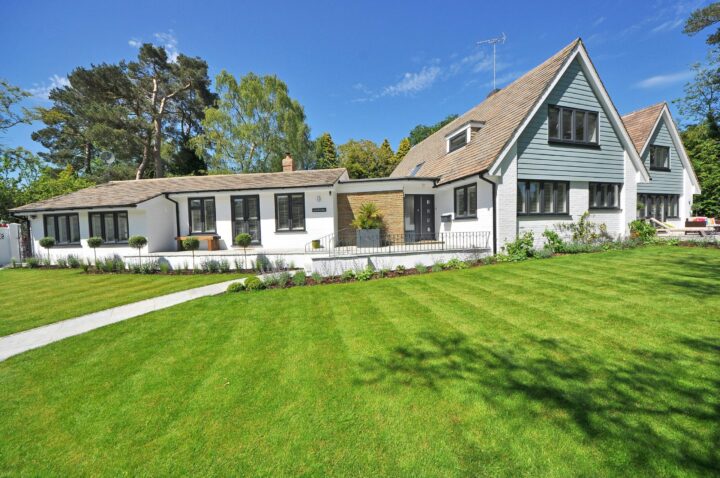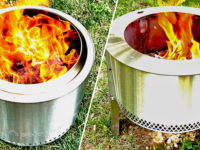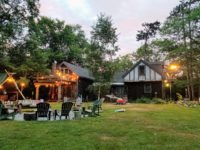The following contribution is from another author.
When you go to a park or a sports field, have you ever wondered how the grass stays so green, flat, and clean? Most of us don’t think about it—we just run around, play, or sit on the grass without giving it a second thought. But keeping those big green spaces looking good isn’t just about mowing and watering. There’s actually a lot of planning, science, and smart choices behind the scenes. That’s where smart landscaping comes in.
Smart landscaping is all about using the right materials and methods to make outdoor areas strong, safe, and good-looking for a long time. Whether it’s a soccer field, a golf course, or a city park, smart landscaping helps the grass stay healthy and the ground stay even. It’s not just for looks, either. It also helps prevent mud, puddles, and damage from heavy foot traffic.
It All Starts Beneath the Surface
The secret to great landscaping is what’s underneath the grass. Most people think grass grows in just dirt, but that’s not really true—not in parks or athletic fields anyway. The ground needs to drain water, support roots, and stay firm even when people run or play on it all day.
That’s why many parks and fields use a special layer of sand beneath the grass. This sand helps water drain quickly, which stops puddles and mud from forming. It also keeps the ground soft enough for grass to grow but firm enough that it won’t sink or shift when people walk or drive over it.
For places like golf courses, the type of sand matters a lot. It has to be super clean and have the right mix of grain sizes so it doesn’t compact too much or blow away easily. If you’re curious, companies that specialize in golf course sand offer sand that’s been tested and graded specifically to keep turf smooth, firm, and playable. Choosing the right sand can make a huge difference in how well the grass grows and how the field holds up.
Drainage Makes All the Difference
Drainage might not sound exciting, but it’s one of the most important parts of landscaping. When it rains, water needs a place to go. Without a good drainage system, water just sits on top of the grass, turning everything into a soggy mess. That’s how you get muddy parks, flooded fields, and patchy dead grass.
Smart landscapers use special techniques to stop this from happening. They build systems under the surface that carry water away fast. These systems usually include sand layers, gravel, and pipes. The sand helps pull the water down through the soil, and the pipes take it away to a safe spot.
Good drainage doesn’t just keep the grass dry—it also keeps it alive. When water drains the right way, air can reach the roots. And grass needs air almost as much as it needs water and sunlight.
Different Grass for Different Jobs
Not all grass is the same. The type of grass used in a shady city park is different from the kind used on a sunny baseball field. Smart landscaping means picking the right kind of grass for the job. Some types grow best in shade. Others handle heavy foot traffic better. Some grow fast but need more water, while others are slow-growing but super strong.
For sports fields, turf managers often choose strong grass that can handle cleats, running, and sliding. On golf courses, the grass on the putting green is trimmed super short and has to be extra smooth, so it’s a completely different kind. Picking the right type of grass helps reduce how often it needs to be replaced and makes maintenance easier and cheaper.
Keeping It All Healthy with Less Work
Once the field or park is set up right—with good sand, drainage, and grass—keeping it healthy doesn’t take as much work. Sure, it still needs mowing and watering, but not as much as you’d think. That’s because smart landscaping sets up the grass to take care of itself as much as possible.
One example is using mulch or ground covers in areas where grass can’t grow well. This helps stop weeds, holds moisture, and keeps the place looking neat without needing constant care. Another is setting up an irrigation system that only waters when the grass actually needs it. This saves water and avoids overwatering, which can cause just as many problems as not watering enough.
Also, regular aeration—poking tiny holes in the soil—helps air, water, and nutrients reach the roots better. That keeps the grass strong, especially in areas that get walked on a lot.
Less Waste, Better Results
Smart landscaping doesn’t just make parks and fields look better. When you use the right sand and grass, you don’t have to use as much fertilizer or chemicals. That means less stuff gets washed into rivers and lakes when it rains. Also, by using water more carefully and picking plants that don’t need a ton of care, parks and fields can stay healthy without wasting a bunch of resources.
Many places are even reusing natural materials. For example, ground-up tree bark or recycled wood chips can be used for walkways, playgrounds, or garden beds.
Why It Matters More Than You Think
It might seem like a small thing—just grass and dirt—but smart landscaping affects a lot more than how a field looks. It keeps people safe by stopping slips and falls. It saves money by making fields last longer without needing to be fixed up all the time. And it helps the planet by using less water and fewer chemicals.
Plus, when parks and fields look nice, people are more likely to use them. Kids run around, families have picnics, and teams play games. All of that leads to healthier communities, both physically and mentally.
What to Remember
So next time you’re kicking a ball around or laying on the grass at a park, think about what’s going on under your feet. That soft, green grass isn’t there by accident. It’s the result of smart choices—picking the right materials, planning for water, and using the best kind of grass for the space.
Smart landscaping may not be flashy, but it makes a big difference. It’s how parks stay beautiful, safe, and fun without needing tons of work all the time. And that’s something everyone can appreciate, whether they’re walking their dog, playing tag, or just enjoying the sunshine.
Want more people to enjoy public spaces and sports fields? It all starts with smart landscaping—and that starts from the ground up.

















Great insights! I especially appreciated the focus on drought‑tolerant designs and water‑wise planting — parks and fields really benefit from sustainable landscaping that stays vibrant with minimal irrigation.
(If anyone’s also curious about adding outdoor lighting to a smart landscape, you might explore https://ledex.ie/collections/outdoor-lights — they offer durable, weather‑rated fixtures that complement greenery well.)